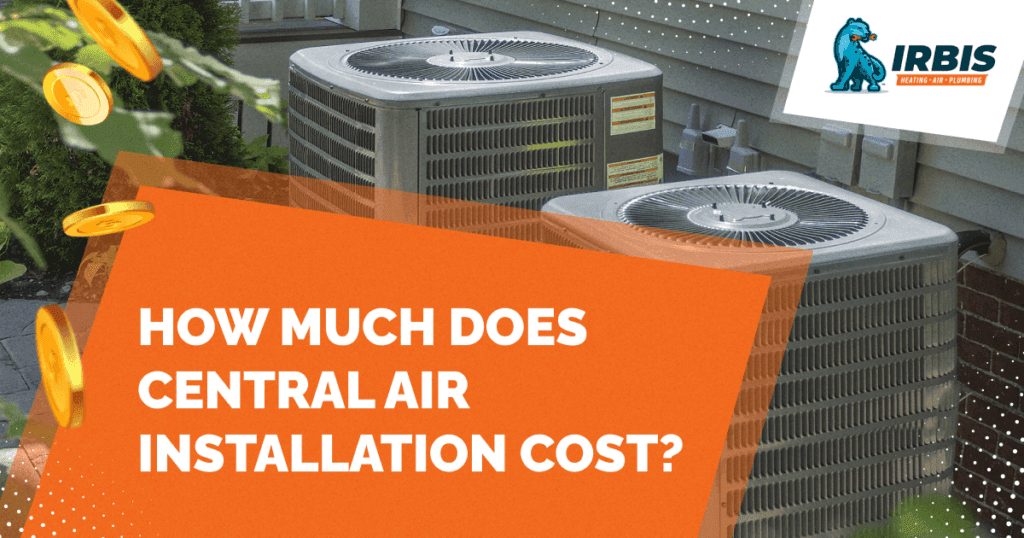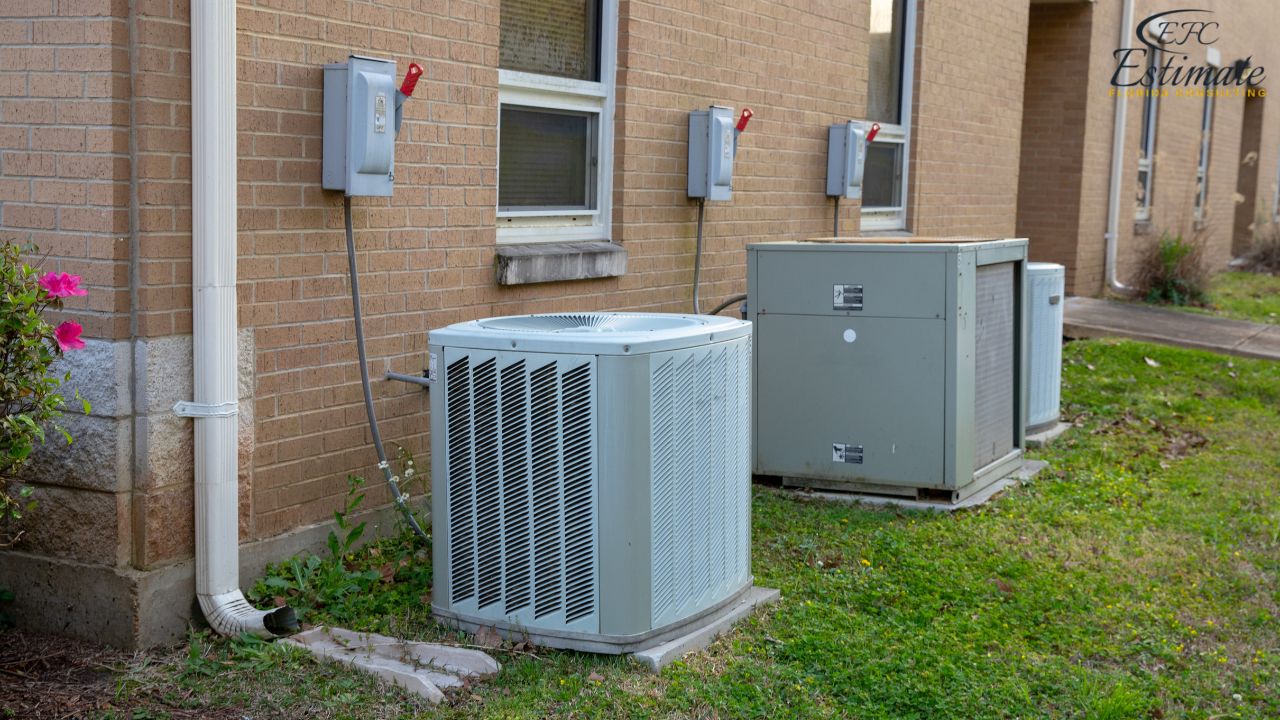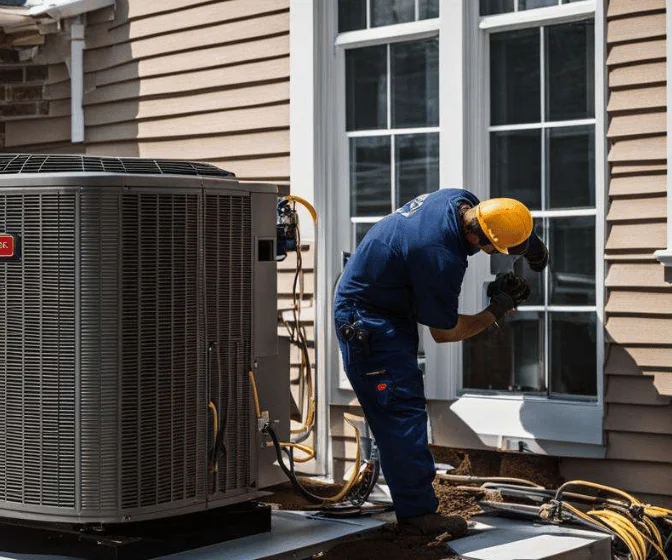How Much To Install Central Air In House

Installing central air conditioning is a significant investment in your home's comfort and value. Understanding the costs involved is crucial for budgeting and making informed decisions. This comprehensive guide breaks down the factors influencing central AC installation costs, helping homeowners, HVAC technicians, and facility managers alike navigate this process.
Factors Influencing Central AC Installation Costs
Several key elements determine the overall cost of installing a central air conditioning system. These include the size and type of the unit, the complexity of the installation, and regional labor rates.
1. System Size (BTU)
The size of the AC unit, measured in British Thermal Units (BTU), is a primary cost driver. BTU indicates the cooling capacity of the system. A larger home requires a higher BTU unit. Choosing the right size is essential; an undersized unit will struggle to cool the space, while an oversized unit can lead to short cycling, humidity issues, and higher energy bills.
Rule of Thumb: A generally accepted guideline is 20 BTU per square foot of living space. However, this is a very rough estimate. Professional load calculations are essential for accurate sizing.
For example, a 1,500 square foot home might require a 30,000 BTU (2.5 ton) unit. Expect to pay more for higher BTU units.
2. Type of System
The type of central AC system you choose significantly affects the installation cost:
- Split Systems: The most common type, split systems consist of an outdoor unit (condenser) and an indoor unit (evaporator coil). Installation involves connecting these units with refrigerant lines and electrical wiring.
- Packaged Units: These combine all components (condenser, evaporator coil, and sometimes a furnace) into a single outdoor unit. They are often used for homes without basements or crawl spaces. Installation is typically simpler than split systems.
- Ductless Mini-Split Systems: These systems use individual indoor units connected to an outdoor unit. They don't require ductwork, making them ideal for additions or homes without existing duct systems. They can be more expensive to install initially, especially with multiple indoor units.
Split systems offer more flexibility in terms of efficiency and features, but packaged units can be more cost-effective in some situations.
3. Efficiency (SEER Rating)
The Seasonal Energy Efficiency Ratio (SEER) rating indicates the cooling efficiency of the unit. Higher SEER ratings mean greater energy savings over the lifespan of the system but typically come with a higher upfront cost. The current minimum SEER rating for most new central AC systems is 14 or 15, depending on the region. Some high-efficiency units boast SEER ratings of 20 or higher.
While a higher SEER unit costs more initially, the long-term energy savings can offset the increased price. Consider your local climate and energy costs when deciding on a SEER rating.
4. Ductwork
Existing ductwork can significantly impact installation costs. If your home already has ductwork in good condition, the installation process is simpler and less expensive. However, if the ductwork is damaged, improperly sized, or non-existent, it will need to be repaired, modified, or installed, adding to the overall cost.
Ductwork repairs and modifications can range from sealing leaks to replacing entire sections of ductwork. New ductwork installation is a major undertaking that requires careful planning and execution.
5. Installation Complexity
The complexity of the installation also affects the price. Factors contributing to complexity include:
- Accessibility: Difficult access to the installation site (e.g., tight crawl spaces, limited attic space) can increase labor costs.
- Electrical Work: Upgrading the electrical panel or running new circuits can add to the overall cost.
- Permits and Inspections: Local building codes often require permits and inspections for HVAC installations, which involve additional fees.
6. Labor Costs
Labor costs vary significantly depending on your geographic location and the experience of the HVAC contractor. Metropolitan areas typically have higher labor rates than rural areas. Obtain quotes from multiple licensed and insured HVAC contractors to ensure you're getting a fair price.
7. Brand and Features
The brand of the AC unit can also influence the price. Some brands are known for their reliability, efficiency, and advanced features, which may command a premium price. Features such as variable-speed blowers, smart thermostats, and zoning systems can enhance comfort and energy efficiency but also increase the initial cost.
Estimating Central AC Installation Costs
Providing a precise cost estimate without a site visit is impossible. However, here's a general range to help you get started:
- Basic Central AC Installation (2.5 ton, 14 SEER, existing ductwork): $4,000 - $7,000
- Mid-Range Central AC Installation (3 ton, 16 SEER, minor ductwork modifications): $6,000 - $9,000
- High-End Central AC Installation (4 ton, 18+ SEER, new ductwork): $9,000 - $15,000+
These are just estimates, and the actual cost can vary significantly depending on the factors discussed above. Always obtain multiple quotes from qualified HVAC contractors.
Long-Term Costs and Benefits
While the upfront cost of central AC installation can be substantial, it's important to consider the long-term costs and benefits. A more efficient system can save you money on energy bills over time. Regular maintenance, such as cleaning or replacing air filters and scheduling annual tune-ups, can extend the lifespan of your system and prevent costly repairs.
Furthermore, a well-maintained central AC system can improve indoor air quality, enhance comfort, and increase the resale value of your home.
Choosing the Right HVAC Contractor
Selecting the right HVAC contractor is crucial for a successful installation. Look for contractors who are:
- Licensed and Insured: Ensure the contractor is properly licensed and insured to protect yourself from liability.
- Experienced: Choose a contractor with a proven track record of installing similar systems.
- Reputable: Check online reviews and ask for references from past customers.
- Offer a Warranty: A reputable contractor will offer a warranty on both the equipment and the installation work.
- Provide a Detailed Quote: The quote should clearly outline the scope of work, equipment specifications, and total cost.
Don't be afraid to ask questions and get clarification on any aspect of the installation process. A good contractor will be happy to explain the details and address your concerns.
Financing Options
Central AC installation is a significant investment, and many homeowners explore financing options to make it more affordable. Options include:
- Home Equity Loans or Lines of Credit: These offer relatively low interest rates and flexible repayment terms.
- Personal Loans: These are unsecured loans that can be used for any purpose.
- Manufacturer Financing: Some HVAC manufacturers offer financing options to help customers purchase their equipment.
- Utility Company Rebates: Many utility companies offer rebates for installing energy-efficient HVAC systems.
Research different financing options and compare interest rates and terms to find the best fit for your budget.
Conclusion
Determining the cost to install central air in a house involves many variables. By understanding the factors that influence the price, such as system size, type, efficiency, ductwork, installation complexity, and labor costs, you can make informed decisions and budget effectively. Remember to obtain multiple quotes from qualified HVAC contractors and consider the long-term costs and benefits of investing in a new central AC system. A well-installed and maintained system will provide years of comfort, energy savings, and improved indoor air quality.










